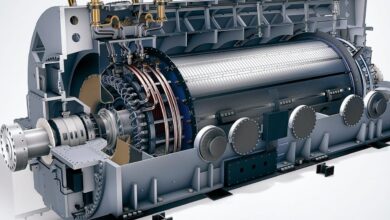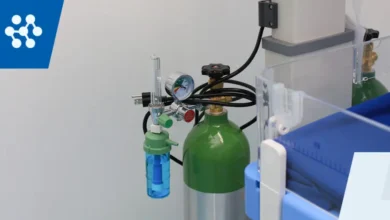Do Tires Really Affect Car Performance? My Before-and-After Test

The Tire Myth Most Drivers Still Believe
Let’s face it—most people don’t think about tires until they absolutely have to. Maybe one goes flat. Maybe the tread gets dangerously low. Or maybe you’re at the dealership, and they recommend a new set that costs way more than you expected. Sound familiar?
I used to think all tires were pretty much the same. Sure, some might be a little quieter, and others might last longer. But could performance tires alone really change how a car performs? Like, really change it?
That question bugged me for years. So, I decided to find out for myself. I did a real-world tire swap on my daily driver, putting it through its paces before and after upgrading to a set of true performance tires.
The result? I was blown away—and I’m here to tell you exactly how it changed everything from braking to cornering to how the car felt on the road.
What “Car Performance” Really Means
When most people hear the word “performance” in the car world, they picture fast acceleration or flashy sports cars. But true car performance is about a lot more than speed.
Here’s what it really includes:
- Acceleration: How quickly your car gains speed
- Braking: How fast you can stop—especially in emergencies
- Handling: How your car responds to steering input, particularly in corners
- Traction: How well your tires grip the road in both dry and wet conditions
- Stability: How planted your car feels at speed or during evasive maneuvers
Guess what all these things have in common? Your tires.
Think about it—your tires are the only part of your car that actually touches the road. Everything from your engine power to your brake system has to work through your tires to do its job. So it makes sense that upgrading them could dramatically change how your car performs.
But I didn’t want to just assume that. I wanted proof.
My Setup: The Before-and-After Tire Swap
For this test, I used my personal car: a 2020 Mazda 6 Grand Touring Reserve. It’s no track monster, but it’s quick, responsive, and has enough power to make a difference when paired with the right rubber. Perfect for this kind of experiment.
Before: Worn All-Season Tires
I started with a basic set of mid-range all-season tires. They had about 40,000 miles on them—still technically safe, but definitely past their prime. Tread depth was around 4/32″, and they felt floaty, especially in corners and wet roads.
Handling? Meh. Braking? Fine, but not confidence-inspiring. It was what most people would call “normal.” Nothing to write home about.
After: Performance Tires Installed
I swapped in a fresh set of GT Radial Champiro SX2 RS—a performance tire developed with motorsport technology. These tires have been used in real racing competitions like Formula Drift and the Subaru BRZ Super Series, so I was excited to see what that kind of race-bred DNA could do for my humble daily driver.
Immediately, I could feel the difference—but I didn’t stop there. I ran a series of informal (but consistent) tests to compare the before-and-after.
Braking Distance Test: The Shocking Difference
The first thing I noticed was how fast the car stopped. So I set up a little test: 60-to-0 mph braking in a safe, open parking lot, measured with a basic GPS-based performance monitor and marked cones.
Results:
- Before (All-Season Tires): ~145 feet
- After (GT Radial Champiro SX2 RS): ~119 feet
That’s a 26-foot difference. In real-life terms, that’s nearly two car lengths—the difference between stopping just in time and rear-ending the car in front of you.
In wet conditions, the improvement was even more significant. The performance tires channeled water better, gripped harder, and felt more stable throughout the stop.
What That Means:
If you’re ever in a panic-stop situation—someone slams on the brakes ahead of you, or a kid runs into the street—your tires can literally be the difference between a close call and a collision.
I always thought my brakes were the limiting factor. Turns out, it was my tires all along.
Cornering and Grip: How the Car Came Alive
Next up was cornering and grip—basically, how the car handled when I wasn’t driving in a straight line.
For this, I used two regular routes:
- A cloverleaf highway on-ramp with a long, tightening radius
- A stretch of twisty backroads I drive often
Before:
The car understeered early, even at moderate speeds. The steering felt vague, and I could sense the tires slipping just slightly in tight corners. Not scary—but not inspiring either.
After:
What a transformation.
The car felt like it was glued to the road. The steering response was sharper, and I could take the same corners 10–15 mph faster without a hint of tire squeal or sliding. I didn’t have to constantly correct or fight the steering—just turn in and go.
Even more impressive? The stability mid-corner. The car felt flat, balanced, and eager. I felt more connected, more confident, and yes—like I was driving a more expensive car.
Road Feel and Confidence: The Intangibles That Matter
Some changes can’t be measured with a stopwatch or tape measure—but you feel them. And for me, this was where the biggest change happened.
With the performance tires:
- The car felt more planted, especially at highway speeds.
- I didn’t have to “think” about grip—I just had it.
- I enjoyed driving more—even on boring routes.
Even my wife, who doesn’t care about cars, commented, “Did you change something? It feels way smoother in turns.”
That’s the kind of transformation a great set of tires can bring.
Conclusion: Yes, Tires Absolutely Affect Car Performance
Before this test, I underestimated just how much SUV tires matter. I figured they’d help a little here and there, maybe feel a bit grippier. But I was wrong.
They changed everything.
- Braking distances shrank by over 25 feet
- Cornering confidence went through the roof
- Acceleration improved thanks to better grip
- The car felt more stable, smoother, and even more fun to drive
And here’s the best part—I didn’t change anything else. Same suspension. Same brakes. Same car. Just tires.
If you’re still riding on worn-out or basic all-seasons and wondering if upgrading to performance tires is worth it—it is. Especially if you care about safety, control, and enjoying the drive again.
FAQs
1. Can new tires really improve braking distance that much?
Yes. In my test, I saw a 26-foot improvement from 60 to 0 mph. That’s a massive difference when every foot counts.
2. Do I need to upgrade my suspension too?
Nope. I kept my stock suspension. Just switching to performance tires made a noticeable improvement in handling and road feel.
3. Will performance tires wear out faster?
Generally, yes. But many modern performance tires balance grip with decent tread life. Expect 20,000 to 40,000 miles depending on how you drive.
4. Are they noisy or uncomfortable?
Some are firmer than touring tires, but many premium options (like Michelin or GT Radial) do a great job minimizing road noise.
5. What’s a good budget-friendly performance tire?
The GT Radial Champiro SX2 RS is motorsport-tested, affordable, and delivers real grip and response. It’s a great entry point into the world of performance tires.




